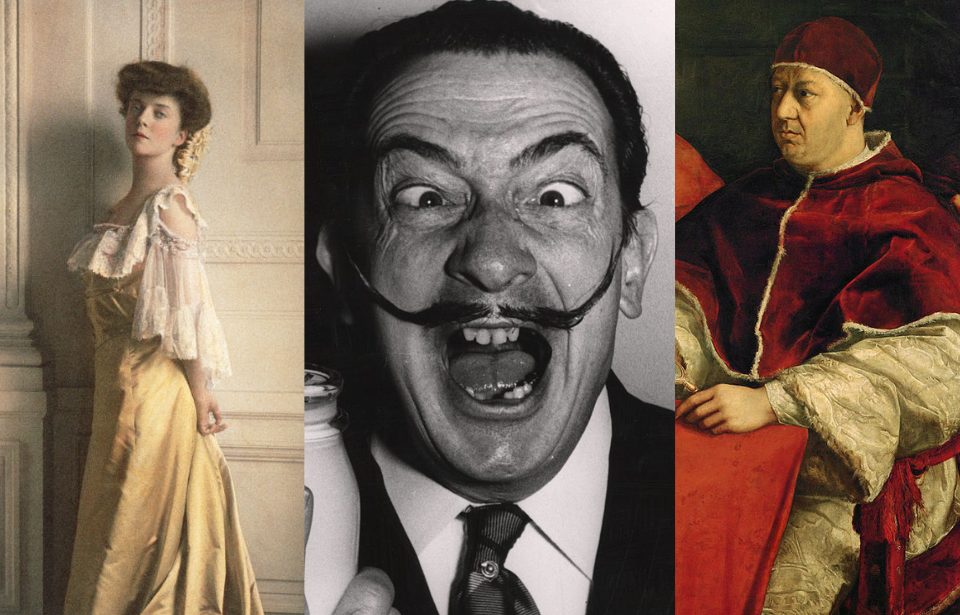It’s possible to adopt a wide variety of pets, but in the past, some people have enjoyed the company of the most unlikely animals — either through chance or design.
Here are ten of the best (or, rather, nine and a legendary fly).
Tycho Brahe and his drunken moose
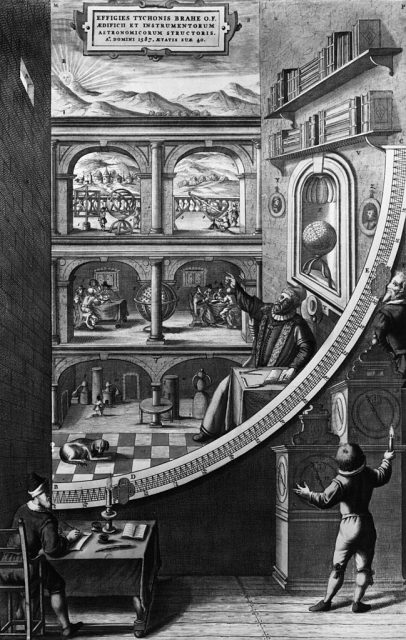
The Danish astronomer Tycho Brahe has been called “the first competent mind in modern astronomy.” However, when it came to pets, his tastes were rather eccentric.
No name appears to have been given to this unusual pet, but apparently it used to trot alongside Brahe’s carriage like a pet dog. The animal was also fond of Danish beer, and Brahe would bring it out to show off to dinner guests.
One of Tycho’s neighbors, a nobleman from Landskrona, asked if he could borrow the moose for one of his own parties. Brahe agreed, and sent the moose over. Tragically, on this occasion, the animal drank so much beer that when it tried to get up the stairs, it fell down them instead and died.
Dante Rossetti and his beloved wombat
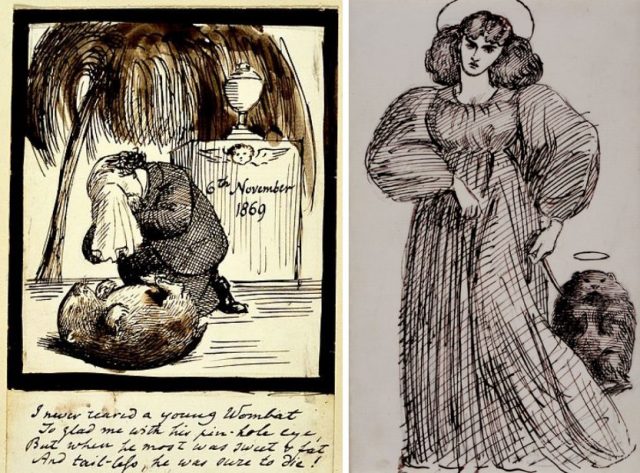
During his lifetime, Dante Gabriel Rossetti owned a kangaroo, a llama, an armadillo, and a toucan. But the pet that touched his heart the most was his wombat, which he named “Top.” This was a sly dig at the husband of his mistress who was called Topsy.
Top was not suited for London life, and he passed away at the age of two. Unwilling to be parted, Rossetti had him stuffed and displayed in his home. He also penned an illustrated poem as a eulogy and drew a picture of his mistress, Jane Morris, and the wombat, both adorned with haloes.
Josephine and her “mini human” orangutan
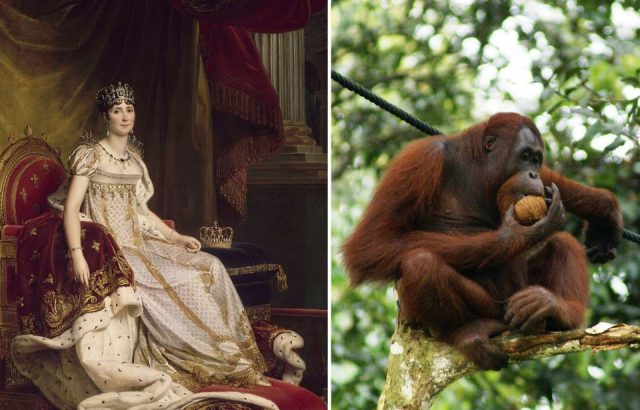
(Photo Credit: Baron François Gérard ”“ Painter (French)Born in Rome. Dead in Paris. Details of artist on Google Art Project, Public Domain & Eleifert – Own work, CC BY-SA 3.0, Wikimedia Commons)
While many people might have treated their animals like humans, Josephine Bonaparte went one step further and treated her orangutan like a miniature human. Rose the orangutan was dressed in small, white dresses and taught to eat with a knife and fork so she could join them for dinner. Apparently, Rose’s favorite food was turnips.
Sadly, such a pampered life did not agree with the animal, and she died within the year.
Salvador Dalí and his pet ocelot (that wasn’t painted)
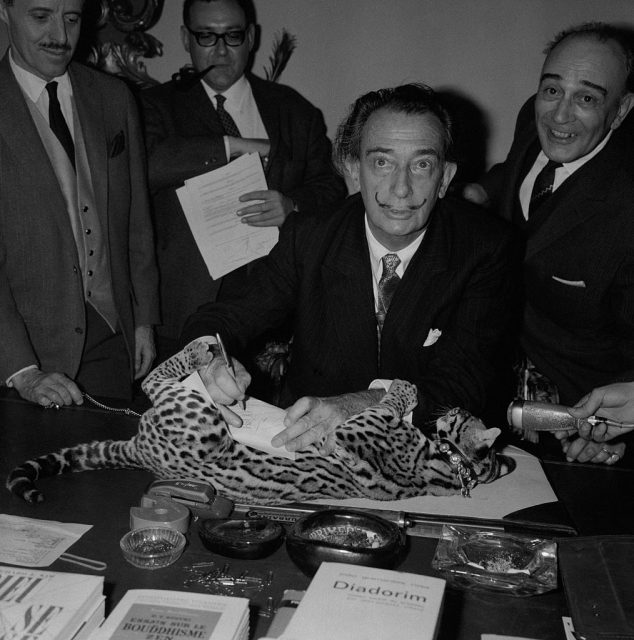
There are several pictures of artist Salvador Dalí wandering around with an anteater on a leash, but there is debate over whether the animal was a pet or merely a publicity stunt. The anteater was named Breton after André Breton, considered by many to be the founding father of Surrealism. The artist was nicknamed “le tamanoir” (anteater) by his friends, so Dalí called his anteater Breton.
One animal that was definitely a pet was an ocelot named Babou, which would accompany Dalí to restaurants. One story goes that when a fellow diner objected to the animal, Dalí told her that it was, in fact, a normal house cat that he’d painted to look “op-art.” Who was not going to believe such a story from a famous and eccentric artist?
However, actor Carlos Lozano, a friend of Dalí’s, felt that the ocelot was not happy away from its natural surroundings. In his memoirs, he wrote: “I only saw the ocelot smile once, the day it escaped and sent the guests at the Meurice scurrying like rats for cover.”
Alligators in the White House
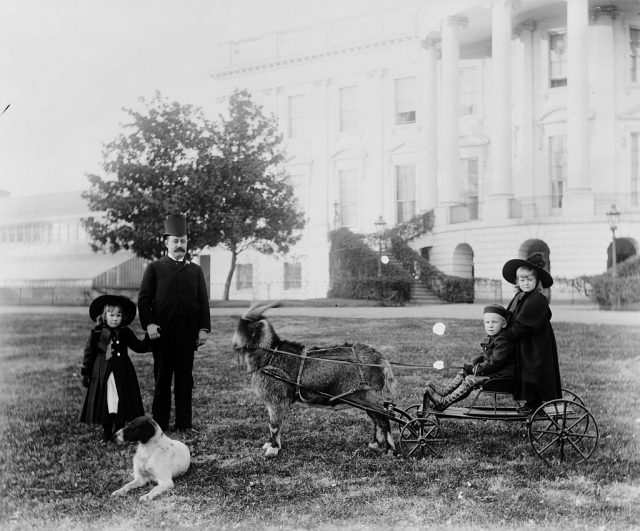
While there are reports that an alligator was housed in one of the bathrooms while John Quincy Adams was in residence, the pet didn’t belong to the president. It was given as a gift to Marquis de Lafayette who was visiting at the time. Records don’t show who suggested it should live in a bathtub in the East Room for two months, but that’s where it was put, allegedly surprising those who wandered in unawares.
Alligators graced the White House again when Benjamin Harrison was in office. While the president himself kept a collie, a goat, and two opossums known as Mr. Reciprocity and Mr. Protection, his son Russell (pictured here with a goat and a dog), kept two alligators in the White House conservatory.
Alice Roosevelt and the snake she took to dinner parties
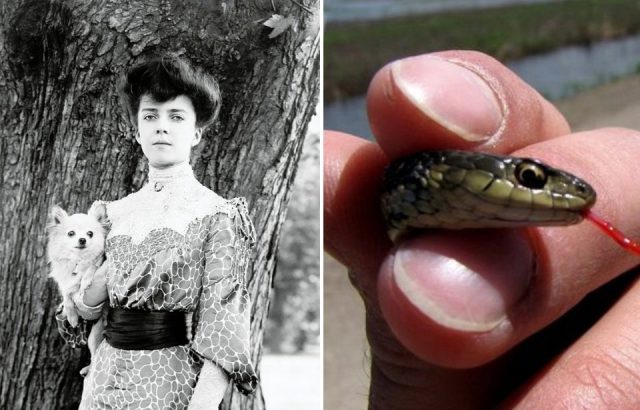
When Theodore Roosevelt was president, a whole host of animals took up residence with him. These included various dogs, cats, ponies, a badger, and a small black bear that was eventually sent to live at the Bronx Zoo.
However, special mention has to be made of a garter snake called Emily Spinach that belonged to Roosevelt’s rebellious daughter, Alice. The snake apparently received its name because “it was as green as spinach and as thin as my Aunt Emily.” What makes Emily Spinach so unique was that Alice used to take the snake to parties and events, curled around her arm as a sort of living accessory.
Charles Dickens and his pet raven (and poor Bob the cat, too)
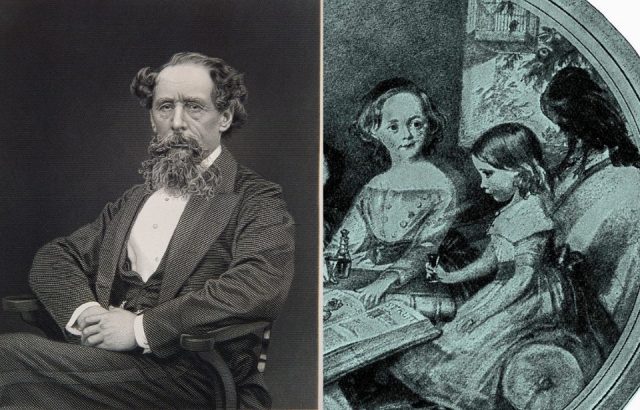
Wanting to learn about the habits of ravens as research for an upcoming piece, Charles Dickens felt that the best option was to adopt one. He called his new pet Grip, and the bird featured in a serialized book called Barnaby Rudge.
According to Janine Pollock, head of the rare books department at the Free Library of Philadelphia, the raven was “very unpleasant toward the children. It was originally in the house, but it was biting the kids, so they had to put him out in the carriage house.”
After Grip’s death, Dickens had him stuffed, and the bird now lives in The Free Library. This isn’t, however, because of his connection with Dickens but because the bird is supposed to have been an inspiration for Edgar Allan Poe’s most famous poem, The Raven.
It’s worth mentioning that one of Dickens’s beloved cats named Bob had a more bizarre ending when he died in 1862. Following Bob’s death, his paw was turned into an elaborate letter opener that is now on display at the New York Public Library.
Pope Leo X and his white elephant (that is buried under the Vatican)
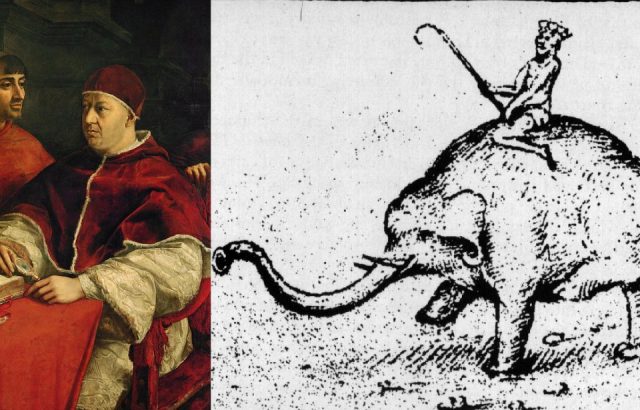
White elephants are extremely rare kinds of Asiatic elephants. In the past, they were considered omens of good fortune and a symbol of royalty or divinity. A perfect present, then, for King Manuel I of Portugal to give to Pope Leo X.
Pope Leo named the animal Hanno. The elephant was well-trained and intelligent, and he soon became the Pope’s favorite pet. Hanno would be brought out on parade for the most important ceremonies.
Hanno only lasted three years. After he died, Pope Leo had the elephant buried beneath the Belvedere Courtyard in the Vatican. The Pope composed an epitaph himself and requested a memorial portrait from Raphael (which, sadly, has been lost).
Lord Byron and his rule-dodging bear
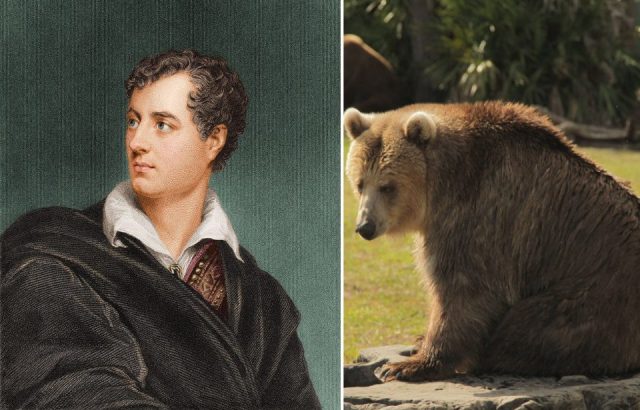
Byron had a fondness for wild animals, particularly foxes, peacocks, monkeys, and horses. However, it was his pet bear that he took with him when he studied at Trinity College, Cambridge. Why this animal? Because while the college had ruled that dogs could not be brought to lectures, there was no rule about bringing bears.
The University of Cambridge website contains an extract from a letter written by Byron to his friend Elizabeth Pigot on October 26, 1807, where he says: “I have got a new friend, the finest in the world, a tame bear. When I brought him here, they asked me what to do with him, and my reply was, ”˜he should sit for a fellowship’.”
Virgil and his pet fly (or not, as the case may be)
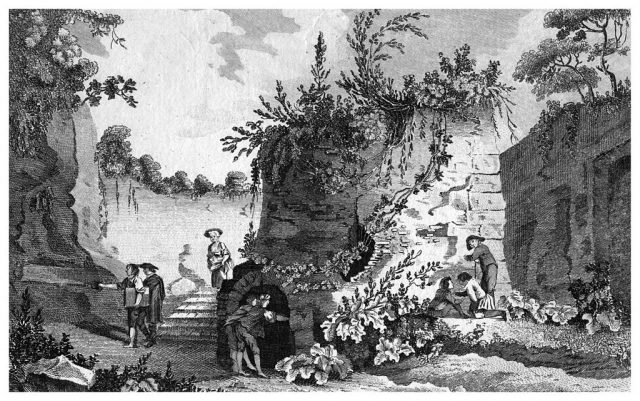
This story may well be a legend created around the famous Roman poet rather than a factual event. After all, following Virgil’s death, some claimed he had founded Naples and had been a dark magician who spoke to the dead (all unsubstantiated).
What is true is that during Virgil’s lifetime, the government decided the lands of the rich would be parceled out to war veterans in return for their loyal service. The exception to this was any land that contained a tomb.
More from us: Lifestyles of the Rich and Furry – The 10 Wealthiest Pets in History
Thinking quickly and creatively, Virgil built an extravagant tomb and organized a lavish funeral for his pet fly, thus saving his lands from confiscation.
While this story probably isn’t true, it’s fun to think it might be.
